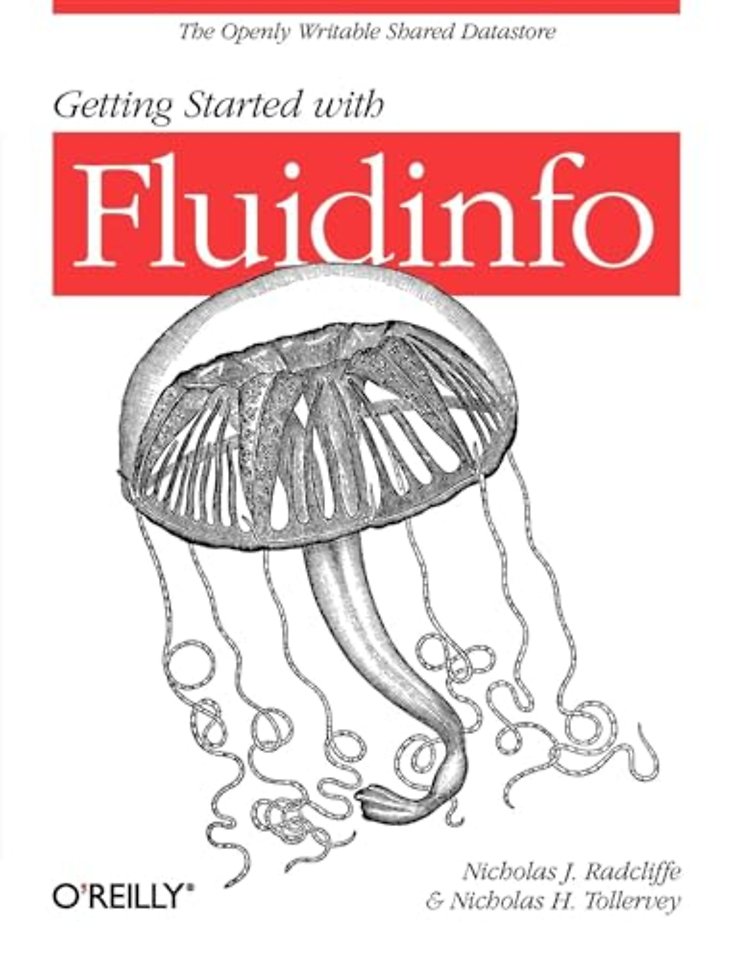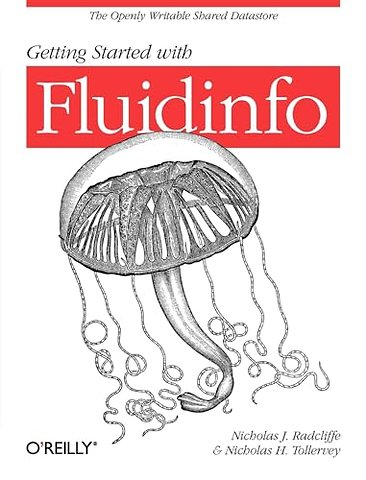Getting Started with Fluidinfo
Paperback Engels 2012 9781449307097Samenvatting
Imagine a public storage system that has a place online for structured data about everything that exists—or that could exist. This book introduces Fluidinfo, a system that enables you to store information about anything, real or imaginary, in any digital form. You’ll learn how to organize and search for data, and decide who can use, modify, and extend what you’ve contributed.
This guide demonstrates Fluidinfo’s potential to create social data, with facilities that encourage users and applications to share, remix, and reuse data in ways they may not have anticipated. You’ll learn how to use tools for reading and writing data, and how to use Fluidinfo in your own applications by working with its writable API and simple query language.Read and write Fluidinfo data from web applications—and reuse and build upon each other’s dataDiscover Fluidinfo’s permissions system for tags and namespacesLearn how to use Fish, the command-line tool for interacting with Fluidinfo dataDelve into Fluidinfo’s RESTful API, and learn how to make HTTP requestsUse Fluidinfo client libraries to build a simple Python utility or a JavaScript web application
Specificaties
Lezersrecensies
Inhoudsopgave
Organization of this Book;
Versions;
Conventions Used in This Book;
Using Code Examples;
Safari® Books Online;
How to Contact Us;
Acknowledgments;
Chapter 1: What Is Fluidinfo?;
1.1 The Openly Writable World;
1.2 Key Concepts;
1.3 Organizational Metaphor;
1.4 Signing Up for a Fluidinfo Account;
Chapter 2: Fluidinfo from the Command Line;
2.1 Getting Started with the Tags, Show, and Get Commands;
2.2 Tagging and Untagging;
2.3 Specifying Objects;
2.4 Managing Tags and Namespaces;
2.5 The Fluidinfo Permissions System;
2.6 Extended Example: Working with Books in Fluidinfo;
Chapter 3: Social Data;
3.1 Twitter and Social Data;
3.2 O’Reilly Metadata;
3.3 Blog Mining and Emerging Conventions;
3.4 Social Data;
Chapter 4: Programming with Fluidinfo;
4.1 Client Libraries;
4.2 Fluidinfo.py Fundamentals;
4.3 Common Tasks Using fluidinfo.py;
Chapter 5: Programming with FOM;
5.1 FOM Fundamentals;
5.2 Putting It All Together;
Chapter 6: Programming Fluidinfo with JavaScript;
6.1 API Functions;
6.2 Utility Functions;
6.3 An Example Application: The Social Bookreader;
Chapter 7: Fluidinfo’s RESTful API;
7.1 Making HTTP Requests to Fluidinfo;
7.2 API Endpoints;
Chapter 8: Advanced Use of the Fluidinfo Shell;
8.1 Permissions in Depth;
8.2 Setting Individual Low-Level Permissions with perms -X;
8.3 Generating Unix-style Long Listings with ls -l and ls -g;
Chapter 9: Conventions for the About Tag;
9.1 A Book Example;
9.2 The Perfect About Tag;
9.3 Normalization and Standardization;
9.4 Specificity, Ambiguity, and Language;
9.5 Tags for Indicating Related Objects (Linking);
9.6 Constructing About Tags for Common Objects;
9.7 The Abouttag Command;
9.8 Finding Fluidinfo Objects from Amazon Product Pages;
9.9 Generic Normalization;
9.10 Command Substitution;
Fluidinfo Query Language Reference;
Tag Presence: The has Operator;
Equality: The = Operator;
Numeric Inequality Comparisons: <, <=, >=, >;
Inexact Text Matching: The matches Operator;
Combining Queries with and, or, except, and Brackets;
List-Valued Tags: The contains Operator;
Colophon;
Rubrieken
- advisering
- algemeen management
- coaching en trainen
- communicatie en media
- economie
- financieel management
- inkoop en logistiek
- internet en social media
- it-management / ict
- juridisch
- leiderschap
- marketing
- mens en maatschappij
- non-profit
- ondernemen
- organisatiekunde
- personal finance
- personeelsmanagement
- persoonlijke effectiviteit
- projectmanagement
- psychologie
- reclame en verkoop
- strategisch management
- verandermanagement
- werk en loopbaan

